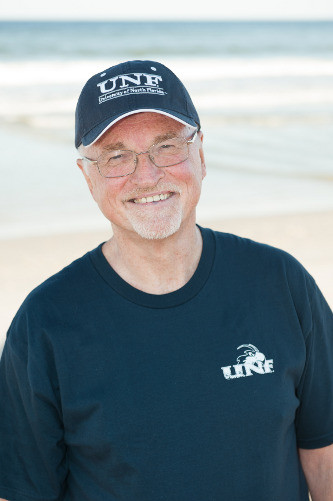UNF ocean engineering professor calls Hurricane Irma a monster with an ‘amazing amount of power’
Dr. Don Resio, a professor at the University of North Florida in ocean engineering and a meteorological expert, said in a Sept. 18 interview with the Recorder that Hurricane Irma had an "amazing amount of power" that would have made Hurricane Andrew look like a mere thunderstorm had it directly impacted Miami.
"In terms of tornados, it's up there with an EF4 tornado, and those are immensely destructive at a local scale,” Resio said. “But the size of this put it as an amazing amount of power. There's sort of a power rating of a hurricane that's energy over time, and this is off the charts on it."
Resio explained that several factors enabled the storm to produce 185 mph winds for a record-breaking 37 hours. One element that led to Irma’s rapid intensification and persistent strength, Resio said, is the fact it did not interact with significant land masses for a considerable amount of time, and the islands weren't large enough to weaken it.
"A lot of the islands seem big, but they're small compared to the hurricane," he noted. "They don't have major mountain chains or anything like Puerto Rico does."
Resio asserted that a lack of windshear in the atmosphere also allowed Irma to remain powerful. Windshear can swiftly weaken hurricanes by removing heat from the circulation.
"It's somewhat interesting because it takes the heat from the surface from water evaporating and going upward,” he said. “Then it releases the heat aloft by the condensation and if it's not being interfered with, it actually has a feedback mechanism of sorts."
The UNF professor said this mechanism works as winds strengthen, and the storm feeds on warm water until it hits a ceiling.
"And that limit tends to be in the range that Irma was in," he added.
Dr. Resio explained that Hurricane Andrew, a Category 5 storm that struck Florida in 1992, was dwarfed by Irma in terms of size because Irma’s persistence enabled it to grow larger than average, and then it "just never got smaller."
“At that point, once you get something going, it can increase its size some but in order to do that you have to go through eyewall replacement cycle," he said.
An eyewall replacement cycle (ERC) is a naturally-occurring process in which the inner eyewall of a major hurricane is replaced by an outer eyewall. An ERC can temporarily weaken a storm before it strengthens again once the process is complete.
Resio attributed the eventual weakening of Irma to its interaction with Puerto Rico and Cuba rather than atmospheric conditions. The professor asserted that Irma could have been worse had it taken a different path.
"If it had gone the path they had once thought it was going to go, which was to turn a little bit earlier, it would've spent less time against Cuba," Resio noted. "And that would've been a double effect because it would've both omitted, or done away with, the decay factor of interacting with Cuba, but it also would've given it a clear shot at the upper Keys and Miami."
Listen to the Recorder's full interview with Dr. Resio below:







